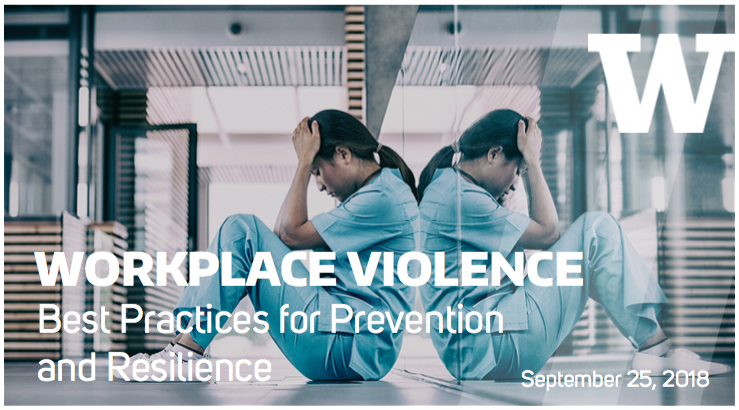Crucial Guidelines for California Workplace Violence Prevention: A Comprehensive Method
Crucial Guidelines for California Workplace Violence Prevention: A Comprehensive Method
Blog Article
Developing a Holistic Framework for Office Violence Avoidance: Best Practices and Trick Factors To Consider for Employers
Workplace physical violence remains a pushing issue for companies across numerous markets, demanding a thorough approach to avoidance. Establishing a holistic structure needs employers to not just understand the ins and outs of office violence yet also to evaluate special dangers and susceptabilities within their environment.
Recognizing Work Environment Physical Violence

Additionally, workplace violence is not restricted to certain industries; it can show up in any establishing where individuals interact. The influence of work environment violence extends past the prompt injury to people; it can lead to lowered employee spirits, increased absence, and substantial monetary costs for the organization.
To advertise a culture of security, it is important for companies to apply reliable interaction channels, perform routine training, and establish clear plans relating to work environment conduct. By recognizing the complexities of work environment physical violence, organizations can develop aggressive techniques aimed at avoidance, eventually guaranteeing the well-being of their workers and promoting a positive job environment.
Assessing Vulnerabilities and threats
Examining susceptabilities and dangers is an important element of an extensive work environment violence avoidance approach. Organizations must initially recognize prospective hazards that might bring about violent cases. This entails assessing various elements, including the nature of the work, employee interactions, and the physical setting. A complete risk evaluation should include both exterior and inner threats, acknowledging that violence can emerge from various sources, consisting of discontented staff members, customers, or exterior individuals.
Companies should carry out routine assessments using an organized technique, such as surveys, interviews, and straight monitorings. Involving staff members in this process can provide beneficial insights, as they may be extra knowledgeable about certain vulnerabilities within their job setting. Furthermore, companies ought to review historic data associated with previous cases of office physical violence to recognize patterns and locations of worry.

Creating Prevention Techniques
After identifying prospective dangers and vulnerabilities, the next step involves developing efficient avoidance approaches tailored to the particular demands of the work environment. A thorough approach ought to include a mix of policies, environmental layout, and employee interaction.
First, companies have to establish clear work environment physical violence avoidance policies that outline undesirable behaviors, reporting procedures, and disciplinary activities (california workplace violence prevention). These plans must be connected properly to all staff members, making certain that every person advice recognizes their civil liberties and duties
Second, the physical environment should be analyzed and modified to decrease threats. This can include improving illumination in car parking areas, installing protection electronic cameras, and ensuring that access factors are monitored. Producing secure spaces for employees to get away to in the event of an event is additionally important.
Training and Awareness Programs
To properly alleviate the dangers connected with work environment physical violence, executing extensive over at this website training and recognition programs is important. These programs gear up staff members with the knowledge and skills required to recognize, prevent, and respond to potential fierce situations.
Training need to incorporate numerous aspects, consisting of the recognition of warning indicators, understanding the dynamics of problem, and establishing reliable communication strategies. By fostering a society of recognition, workers end up being alert and equipped to report concerning habits or incidents without anxiety of retribution.
Additionally, it is important for training programs to be tailored to the certain needs of the company and its labor force. Routine workshops, simulations, and role-playing circumstances can improve understanding and retention of information, making staff members extra experienced at taking care of real-life circumstances.
Companies must likewise make certain that training is not a single occasion but rather a continuous process that advances with the organizational landscape. Routine refresher course programs and updates on best methods will certainly aid sustain understanding and strengthen the importance of an aggressive strategy to work environment security.
Ultimately, well-structured training and awareness programs function as a structure for a safer work environment, creating an environment where workers feel protected and supported.
Monitoring and Continuous Improvement
Effective monitoring and constant enhancement are important components of a robust workplace physical violence avoidance program. This includes accumulating and assessing data related to occurrences of office violence, worker feedback, and training end results.
Developing crucial performance indicators (KPIs) is crucial for tracking development. These metrics may consist of the number of cases reported, employee involvement rates in training programs, and overall employee fulfillment with safety and security measures. Conducting regular safety audits and threat evaluations further boosts the program's effectiveness, enabling companies to proactively resolve prospective dangers.
Integrating worker input through studies or emphasis groups promotes a society of openness and encourages continuous dialogue about security issues. By prioritizing surveillance and continual renovation, employers not only boost the efficiency of their office physical violence prevention programs however additionally demonstrate a dedication to worker health. This iterative process ultimately original site adds to a safer, much more effective work environment, strengthening the organization's dedication to avoid physical violence in the work environment.
Conclusion

The impact of workplace violence expands past the prompt injury to individuals; it can lead to lowered staff member morale, enhanced absenteeism, and considerable monetary expenses for the organization.
Examining vulnerabilities and risks is a vital component of a comprehensive workplace physical violence avoidance method.Reliable monitoring and continuous renovation are crucial elements of a durable office physical violence prevention program. By prioritizing monitoring and continuous improvement, companies not just improve the efficiency of their work environment violence prevention programs yet additionally demonstrate a commitment to worker well-being.In conclusion, the facility of a holistic structure for work environment violence prevention is crucial for promoting a encouraging and risk-free job environment.
Report this page